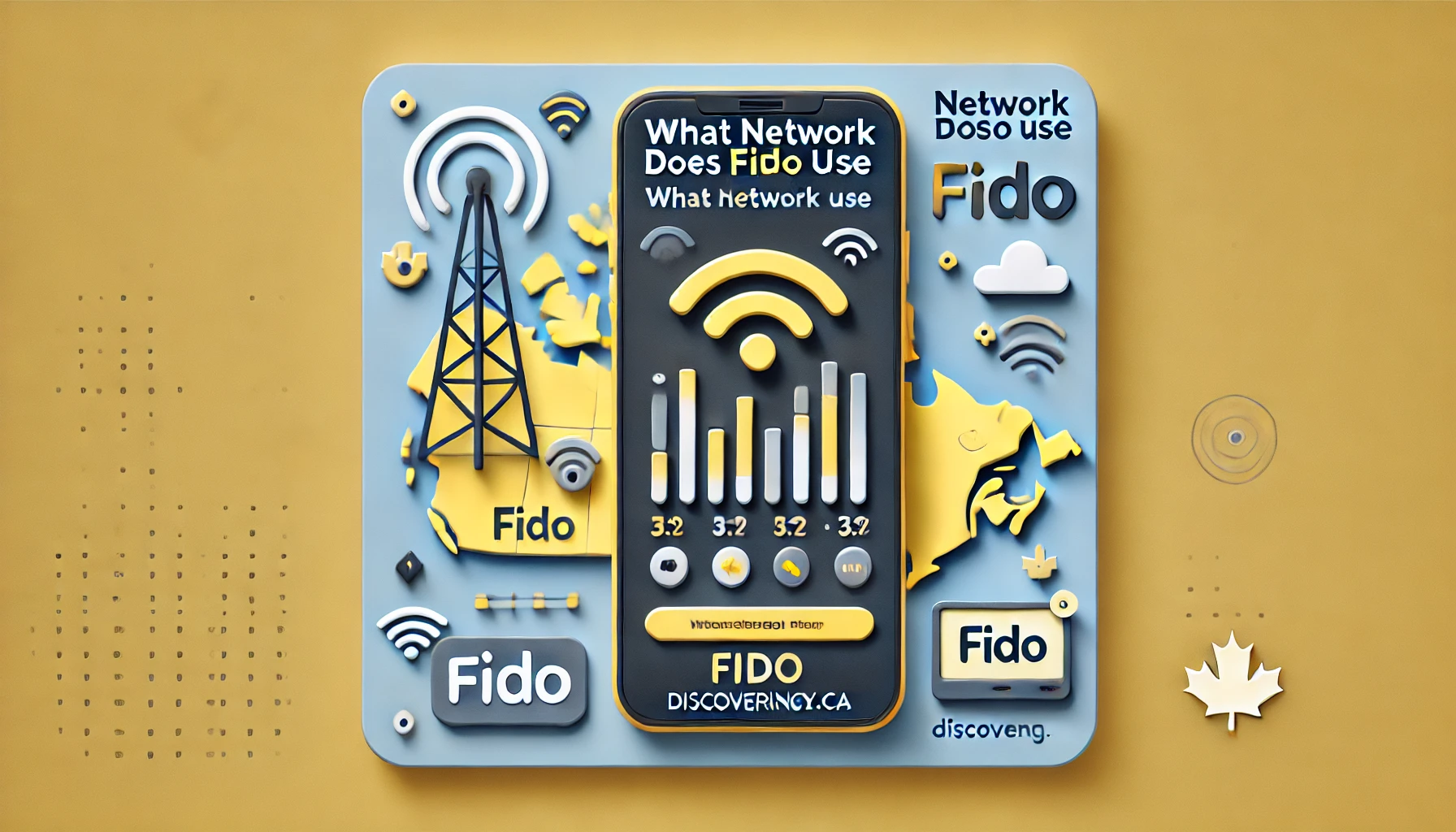What Network Does Fido Use? Understanding Fido’s Coverage in Canada
Fido is a popular Canadian mobile service provider that operates on the Rogers Communications network. As a subsidiary of Rogers, Fido leverages Rogers’ extensive nationwide network infrastructure to provide coverage and service to its customers. This partnership allows Fido customers to benefit from Rogers’ vast and reliable network, which includes access to LTE and 5G connectivity in major cities and rural areas across Canada.
With this shared network, Fido offers similar coverage to Rogers customers, providing reliable voice, text, and data services throughout the country.
Fido’s Network Details and Coverage
Since Fido uses the Rogers network, it offers:
- Nationwide LTE and 5G Coverage: Fido’s network coverage spans most of Canada, including urban centers and rural regions, with LTE connectivity in most areas. Fido has recently expanded to include 5G access in select locations, providing faster speeds and lower latency for data.
- 4G and LTE Networks: Fido’s 4G LTE coverage is widespread across Canada, delivering reliable speeds and data connectivity to most customers.
- Roaming Coverage: As a Rogers brand, Fido offers strong international roaming options and competitive rates for customers traveling within North America and beyond, ensuring consistent access to service even when abroad.
Fido’s coverage reliability and strength closely mirror that of Rogers, which has invested significantly in expanding and improving its network infrastructure across Canada.
Benefits of Fido’s Network Access
Using the Rogers network provides Fido customers with several key benefits:
- Wide Coverage Area: Fido’s coverage spans most of Canada, including remote and rural areas, allowing for dependable service nationwide.
- High-Speed Data: Fido offers 4G LTE speeds in most regions and now includes 5G access in select cities, making it ideal for activities like streaming, gaming, and video calling.
- Strong Indoor Coverage: The Rogers network provides robust indoor coverage, ensuring reliable reception within buildings and densely populated areas.
- Network Quality and Reliability: Rogers is one of Canada’s largest telecommunications companies, known for consistent service, which benefits Fido customers in terms of call quality and data speeds.
These advantages make Fido a solid choice for users looking for reliable connectivity and high-speed data on a trusted network.
Fido’s 5G Access
As 5G technology becomes increasingly available, Fido has started offering 5G access to customers in select urban centers. With 5G, Fido users in compatible areas can experience:
- Faster Download and Upload Speeds: 5G speeds are significantly higher than LTE, enabling faster downloads, smooth streaming, and quick uploads.
- Lower Latency: The low latency of 5G technology reduces delays in data transmission, which benefits activities like gaming and real-time video calls.
- Enhanced Network Capacity: 5G allows more devices to connect simultaneously without slowing down, improving performance in high-traffic areas.
Though 5G is not yet available everywhere, Fido continues to expand 5G coverage in major cities, enhancing the user experience for compatible devices.
How Fido’s Network Coverage Compares to Other Carriers
Fido, as a subsidiary of Rogers, provides comparable coverage to Rogers customers, which positions it well in Canada’s mobile market. Here’s how it compares to other major networks:
- Bell and Telus: Bell and Telus share network infrastructure, offering strong coverage in urban and rural areas. While Rogers (and thus Fido) has competitive coverage, Bell and Telus may have an advantage in some remote regions.
- Freedom Mobile: Freedom has a more limited network, primarily covering urban areas. It offers competitive rates, but its coverage does not extend as widely as Fido’s. Freedom customers often rely on roaming partnerships outside major cities.
- Koodo and Virgin Plus: As subsidiaries of Telus and Bell, respectively, Koodo and Virgin Plus leverage Bell and Telus’ joint network, making them comparable to Fido in terms of coverage quality.
Overall, Fido’s network coverage and quality are strong, especially within Rogers’ footprint, making it a reliable choice for nationwide connectivity.
Frequently Asked Questions
- What network does Fido use?
- Fido uses the Rogers Communications network, which provides extensive coverage across Canada, including LTE and select 5G access.
- Is Fido’s coverage the same as Rogers?
- Yes, since Fido operates on the Rogers network, it offers the same coverage as Rogers customers, including LTE and limited 5G access.
- Does Fido offer 5G connectivity?
- Yes, Fido has started offering 5G service in select cities, with plans to expand as 5G becomes more widely available across Canada.
- Is Fido a good choice for rural coverage?
- Yes, as part of the Rogers network, Fido offers strong rural coverage in many parts of Canada, though remote coverage may vary based on specific locations.
- Can Fido customers use their phones internationally?
- Yes, Fido offers international roaming options for customers traveling abroad, providing coverage in many countries through partnerships with local networks.
Conclusion
Fido, operating on the Rogers network, offers extensive coverage and reliable service across Canada. From LTE connectivity in rural regions to 5G access in select urban centers, Fido provides customers with dependable mobile service on one of Canada’s largest networks. Whether you’re looking for high-speed data, strong rural coverage, or reliable connectivity in urban areas, Fido leverages Rogers’ infrastructure to offer a strong and competitive network for Canadian users.






